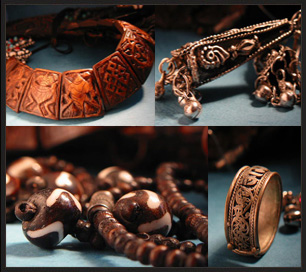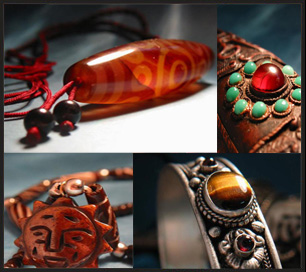|
Buddha Eyes, Eyes of Buddha , Buddha's Eye, Wisdom Eye, Eyes of Wisdom, Wisdom Eyes, Tibetan Eyes, Buddhism Eye, Buddhist Eyes, Buddhism Third Eye, Buddhist Third Eye, Tibet Eye, Buddhism Eyes
buddha eyes jewelry, buddha eyes pendant, wisdom eyes jewelry, tibetan eyes jewelry, buddist eyes jewelry, buddhist third eye jewelry, buddhism eye jewelry
|
|
The Buddha eyes are so prevalent throughout the country that they have become a symbol of Nepal itself.
Between the Buddha's eyes where the nose would be is a curly symbol that looks like question mark.
This is the Nepali character for the number 1, which symbolizes unity of all the things as well as the one way to reach enlightenment—through the Buddha's teachings.
Above this is a third eye, symbolizing the all-seeing wisdom of the Buddha.
--------------------------------------------------------------------------------------------------------
Labels: buddha eyes jewelry, buddha eyes pendant, wisdom eyes jewelry, tibetan eyes jewelry, buddist eyes jewelry, buddhist third eye jewelry, buddhism eye jewelry, Tibet Artwork, Tibetan Silver Jewelry , Tibetan Jewelry, Tibet Jewelry, Jewelry from Tibet, Tibetan Buddhist Jewelry, Tibetan Turquoise Jewelry, Tibetan Jewelery, Buddhist Jewelry
|
Buddhist Symbols
In the earliest centuries of Buddhism, statues of the Buddha were not used. Instead, Buddhist art consisted of images symbolizing the Buddha and his teachings, such as the lotus, the Wheel of the Law, the Bodhi tree and the Buddha's footprints.
Eventually, the Buddha image became one of the most popular representations in Buddhism, but these early symbols remain important and are frequently used to this day. They are especially important in Theravada Buddhist countries like Sri Lanka and Thailand.
As Buddhism spread, Buddhist symbolism was enriched by the cultures it came into contact with. This is especially true of Buddhism in Tibet, which has developed a rich symbolic tradition. The central symbols of Tibetan Buddhism are the Eight Auspicious Symbols, known in Sanskrit as Ashtamangala (ashta meaning eight and mangala meaning auspicious). The Eight Auspicious Symbols are printed on Tibetan prayer flags, incorporated into mandalas and thangkas, and used in other forms of ritual art. Another important symbol is the Wheel of Life, a symbolic representation of the universe as understood by Tibetan Buddhists.
Other important types of symbolism in Buddhism include colors, especially the five colors of white, yellow, red, blue and green, and symbolic hand gestures called mudras. The articles in this section explore these Buddhist symbols, providing information on their history, meaning and use in Buddhism today. (For an introduction and quick guide to Buddhist colors, see our Chart of Buddhist Color Symbolism.)
|
|

Abhaya Mudra
|

Bhumisparsha Mudra
|
|
|
|
|
|
|
|
|
|
|

Lotus
|
|
|
|
|
|
|
|
|
|
|
|
|
|
|
|
|
|
|
--------------------------------------------------------------------------------------------------------
Labels: buddha eyes jewelry, buddha eyes pendant, wisdom eyes jewelry, tibetan eyes jewelry, buddist eyes jewelry, buddhist third eye jewelry, buddhism eye jewelry, Tibet Artwork, Tibetan Silver Jewelry , Tibetan Jewelry, Tibet Jewelry, Jewelry from Tibet, Tibetan Buddhist Jewelry, Tibetan Turquoise Jewelry, Tibetan Jewelery, Buddhist Jewelry
|
|




添加新评论